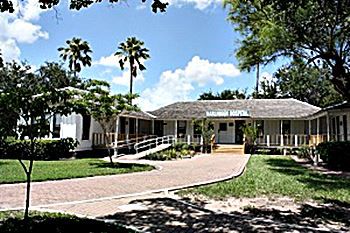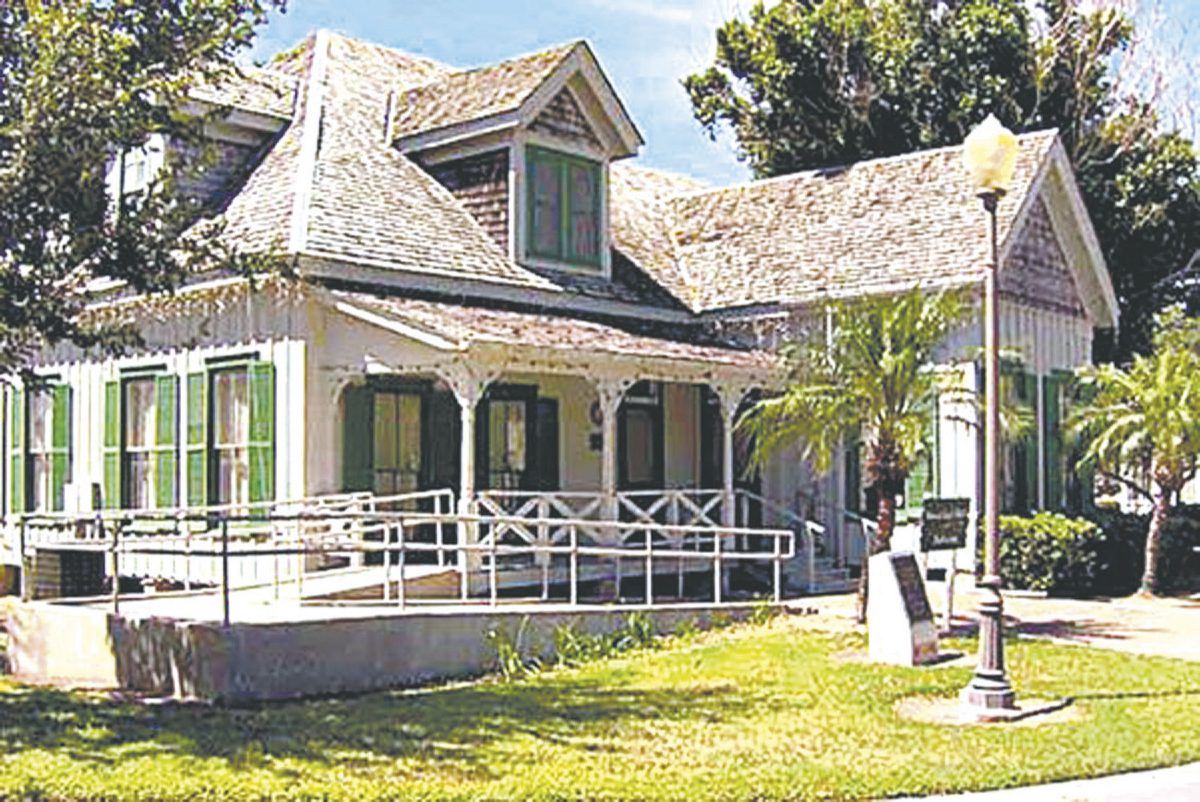BY NORMAN ROZEFF
In 2013 the museum commenced hosting a series of “brown bag” lunch time presentations. The purpose was to attract more business and professional people to participate in museum activities. The series continued for a while then was discontinued as the attendance was tepid.
By September 2013 the city had appropriated money to replace the deteriorating fencing surrounding the museum complex. Association members were, at the time, researching a computer archival program to purchase. This would be a very valuable asset and also useful for insurance purposes, but would also need a physical connection from one side of the museum to the other.
As previously noted the historic buildings at the museum were, because of their age, continuously in need of repair. Fortunately knowledgeable volunteer labor came to the rescue to paint the Paso Real Inn and conduct repairs on it. Later railings of the porch of the old hospital were replaced by a volunteer.
The Valley Baptist Medical Center donated funds to re-shingle the shake roof of the hospital. The painting of the Lon C. Hill House exterior was done by professionals and in authentic colors that reflected its original appearance. It also needed shoring up under its kitchen area. The docents spent many hours in bringing the interior of the house up to par and authenticity for an improved and comprehensive visitor experience.
In April 2013 the Museum Association approved the hiring of an architect for the design of the Historical Building and secured funding up to $10,000 to be shared by the city. Later Ed Meza was brought on board to design the exhibition aspects of the Historical Building interior.
This gentleman possessed a wealth of practical experience in designing, having done so for the Weslaco Museum, the San Benito museums, and as former director of the Museums of Port Isabel.
Over the months and years the museum continued to host a wide diversity of exhibits. While art works predominated, there were also such unique ones such as the Holocaust Museum of Houston’s When They Came to Take My Father (It was generously backed by funding from Rollie Koppel), an exhibit of colorful Valley produce packing labels, Decor of the 50s Revisited, the Great Depression in the Valley, Hurricanes of Texas (furnished by NOAA), Quanah and Cynthia Ann Parker, and many more.
The museum also saw an upswing in its facility rental usage as its attractive setting became the site of weddings, birthday celebrations, baby showers, mixers, and more.
9/2014 From architect estimates it appears that Phase I renovations would cost an estimated $180,000 while Phase II about $350,000 at minimum.
Phase II is estimated to take one year to implement.
With these figures in mind funds will need to be raised in a capital campaign. Ruthie Ewers is selected to lead the fund raising campaign to renovate the interior of the Historic Building of the Museum and more. The campaign kickoff is delayed until construction rebids are received and awarded.
One of Ewer’s fund-raising ideas was to have donors recognized by airplane silhouette plaques of varying sizes relative to their donation amounts.
These would be affixed to the front outside wall of the Historic Building.
The planes would be a throwback and tie to the Harlingen Air Force Base that originally occupied the building. The building itself would bear the name of the largest single donor, this being in the neighborhood of $100,000 or more. Court yard redesign and repaving together with improved landscaping would also be a part of the building redesign. Thoughts were to possibly give the paving an airplane runway appearance.
Utilizing City maintenance labor a considerable amount of renovation work went into the old history building during Phase I, initially forecast to take three months. Not only were new ADA handicap accessible restrooms installed, but there was also created a special family-orientated room with a baby changing table. The wall to a large occasionally used back room was removed thereby allowing for a considerably improved flow pattern.
Windows to a seldom-used kitchen behind the former back room were sealed off to provide additional exhibit space. The same crew also installed new lighting and painted the ceilings black for a modern museum appearance. Better access to the former cell area was provided. Lastly Guy Mattei designed and fabricated a unique wrought iron gate for the museum display room entrance. The sliding gate had a series of wheels resembling those once utilized on farm rotary hoes. The gate was funded by the Museum Association.
The Ross-Bobo House when it was initially moved to the museum complex was given a new shingle roof on its hipped structure. This was an excellent precautionary measure that prevented its continuing deterioration. Docent Sue Debrooke was instrumental in painting the house’s exterior further preventing weathering.
While some interior gutting has taken place, lack of funds has prevented the full-blown reconstruction that just might involve costly removal of asbestos-containing wall board plaster. Thoughts are that when the house is completely renovated it may be used by the museum to conduct youth activities. The museum awaits an angel or two to fund the interior work.
In order to offset costs of the planned Convention Center, the city reduced funding from the hotel occupancy tax to the Municipal Auditorium, Performing Arts Center, Downtown Harlingen, and the Harlingen Arts & Heritage Museum. The allotment to the museum went from $83, 946 to $60,000 between 2015 and 2016. Fortunately the Rio Grande Museum Association raised enough funds to offset this reduction.
January 2016 In an effort to attract visitors using Harlingen hotels 5000 rack cards are printed. On one side is HA&H Museum promotion photos and literature while on the obverse side is literature on the Iwo Jima Museum. The cards are placed in hotel lobbies and the Chamber of Commerce among other sites. At times over the years the association has funded museum highway billboard advertising. As the cost of billboard rentals rose sharply, the association discontinued this method of advertising.
It was this same month that Meza Consulting Services presented the initial exhibit layout plan for the historical building. The previous year the city had allocated $65,000 to assist with the costs of architectural design and preliminary demolition and renovation costs.
In the summer of 2016, an attractive informational brochure on the fund raising was designed and printed to distribute to prospective donors.
By the end of this year visitor numbers had risen to 13,204.
2017 Under the My Harlingen website and the Harlingen Arts and Heritage Museum link, the city’s webmaster commenced putting Norman Rozeff’s The Chronological History of Harlingen and a large number of his Harlingen history articles online.
In March the museum staff, docents, and advisory board members convened to brainstorm ideas to enhance the number of visitors to the museum.
Each Saturday in June with the partnership of the City, Gold’s Gym, the Harlingen Police and Fire Departments, and Harlingen Family Dentistry, the museum hosted a workshop promoting Children’s Health month.
As always, the goal of museum, its advisory board, the museum association, and the city fathers is to increase the number of visitors to the museum and to supplement the youth development of the community. Secondarily, is the need to increase museum rental revenues in order to help sustain the physical infrastructure of the museum. And thirdly, there is the ever-present need for volunteers.





